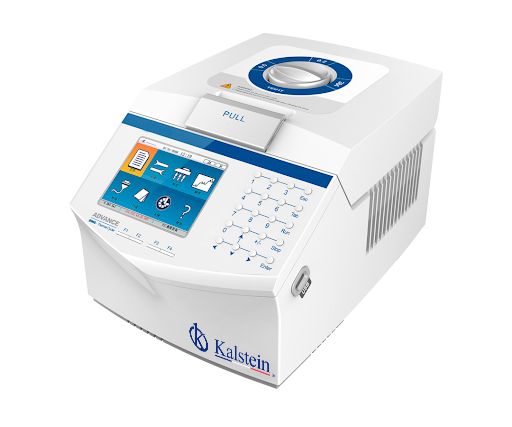There are high expectations placed on the investigation of the molecular basis of life. It is expected that new diagnostic and therapeutic methods will be developed with the investigation of the human genome. At the same time, the importance of the genetic knowledge produced by this research for humans and their living environment remains difficult to estimate.
One of the techniques that has driven genome research is the polymerase chain reaction (PCR). Since its development in 1985, PCR has had a great influence on biological research and biotechnology, since DNA from different origins can be multiplied very quickly. PCR has been used for DNA amplification from a wide variety of sources:
- 40,000-year-old mammoth DNA fragments.
- DNA from small amounts of blood, tissue, or semen in the investigation of violent crimes, such as homicides and rapes.
- DNA from individual embryonic cells for rapid prenatal diagnosis of genetic diseases.
- DNA from viral genes in cells infected with a virus that is difficult to detect, such as HIV.
Why is the polymerase chain reaction so efficient in DNA replication?
With the help of PCR, any piece of DNA can multiply quickly, without the need for cells. The DNA is incubated together with a thermostable DNA polymerase in a reaction vessel with a nucleotide supply. In addition, so-called primers are short pieces of synthetic single-stranded DNA that attach to the correct places on the given DNA molecule after it has been separated by heating. Thus, PCR has the following advantages:
- Speed.
- Reliability.
- Economical.
Thus, by automatically heating and cooling with a thermo-cycler, billions of copies of a particular DNA segment can be produced in a few hours. This is much faster than cloning a piece of DNA for several days by producing a recombinant plasmid and replicating it in bacteria. A particularly important component of this reaction is heat-resistant DNA polymerase, which was first isolated from a genus of heat-resistant bacteria (Thermus aquaticus, hence the abbreviation for the enzyme Taq).
Since primer parts can be used to determine exactly which section of DNA you want to multiply, only small amounts of the specific DNA in the starting material are sufficient and, in addition, this DNA does not even have to be particularly purified. Occasional errors during the many DNA replications limit the number of correct copies that can be obtained with this method from an initial DNA section.
What are the biomedical applications of studying the genome?
The biomedical applications of PCR are enormous. Now that very small amounts of foreign DNA can be detected in a living being, viral and bacterial infections can be determined from samples taken from patients without a time-consuming culture of microorganisms. PCR is now used, for example, to detect HIV infections.
Since the discovery that sufficient fetal DNA circulates in the mother’s blood to study variations and the integrity of the fetal genome in a sample, prenatal genetic testing has played an increasingly important role in prenatal diagnosis. An example is screening Rhesus negative pregnant women for Rhesus positivity of the embryo. If there is a risk of a severe immune reaction, the mother is treated with anti-D prophylaxis. By measuring the fetus’s Rhesus factor, unnecessary prophylaxis can be avoided in 40% of women.
The methodology can also be used to detect genetic errors underlying inherited diseases. Therefore, this method, together with the possibility of targeted mutagenesis, has great potential for gene therapy. Without PCR, the Human Genome Project to determine every DNA code in the human genome would hardly have been realistic. In police investigations, PCR can provide crucial information, as it is now possible to determine the DNA from a single drop of blood or a hair root cell found at a crime scene.
Kalstein thermocycler for polymerase chain reaction
The heating and cooling cycles required in the PCR require a reliable thermo-cycler, such as the one supplied by the Kalstein equipment manufacturer. These instruments are characterized by being robust in laboratories that process large amounts of samples; it has an intuitive interface that allows easy handling and a state-of-the-art Peltier cooling technology. Further technical details of these instruments, as well as prices, purchase and quotation, can be found on the following pages HERE and HERE.

